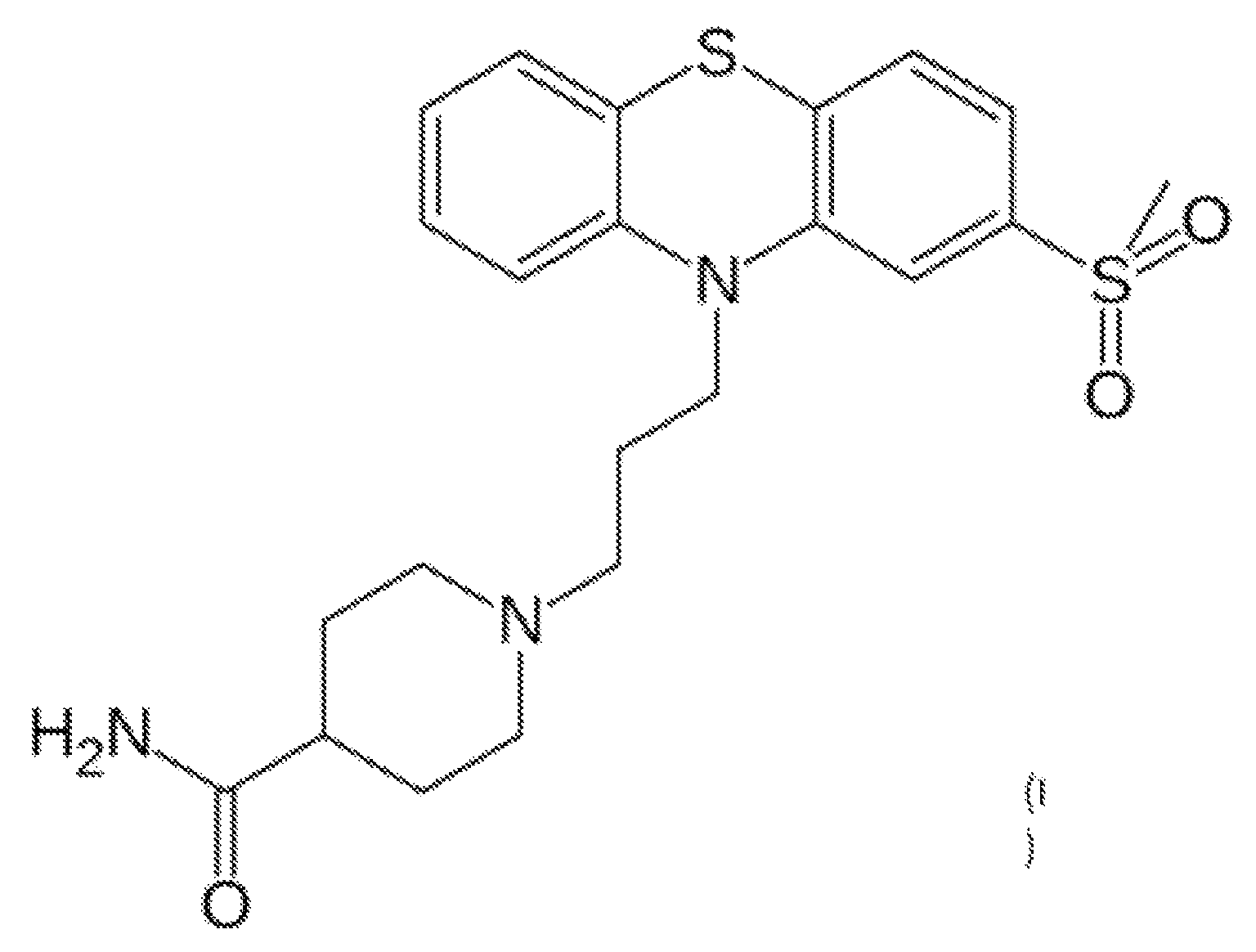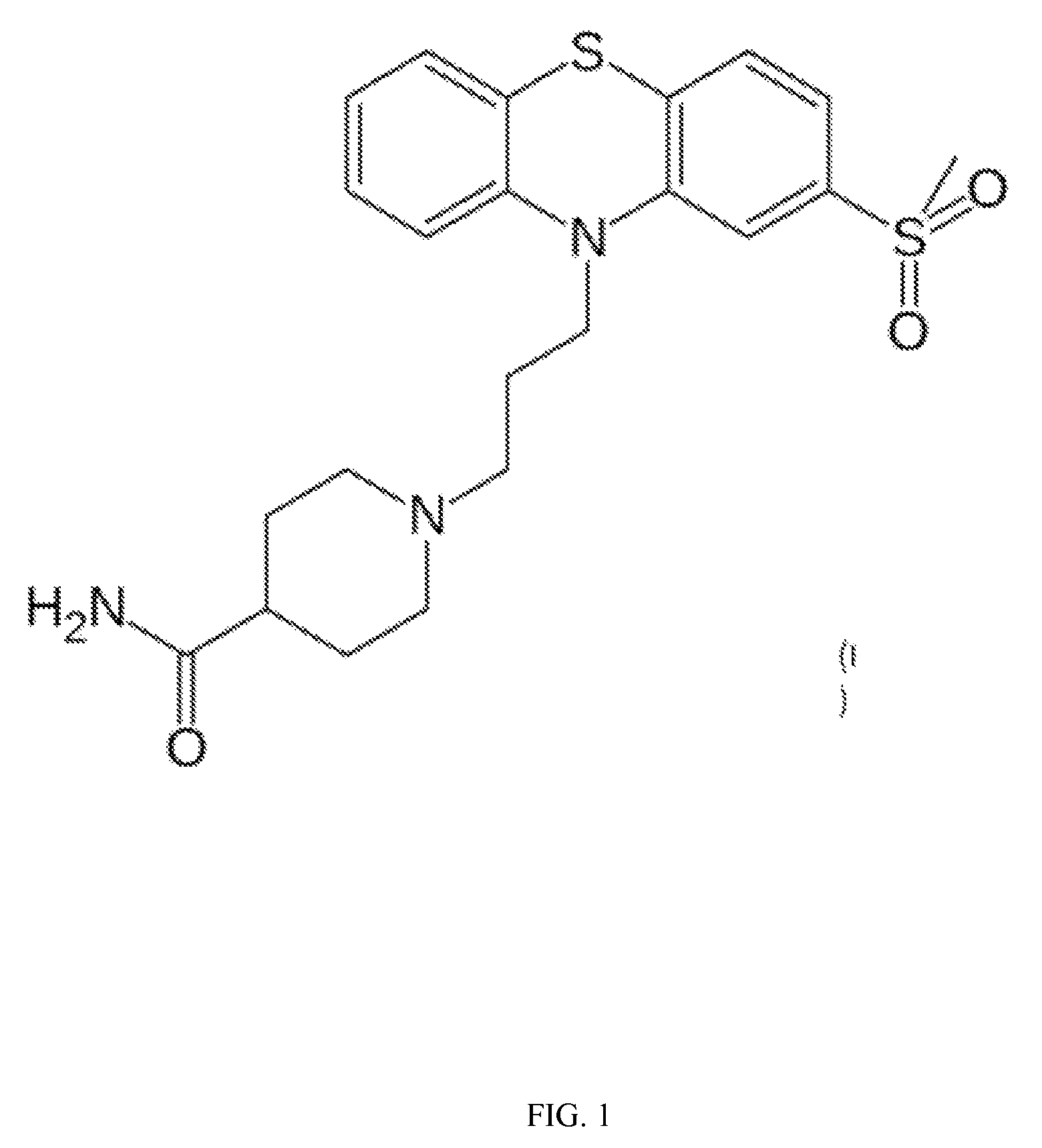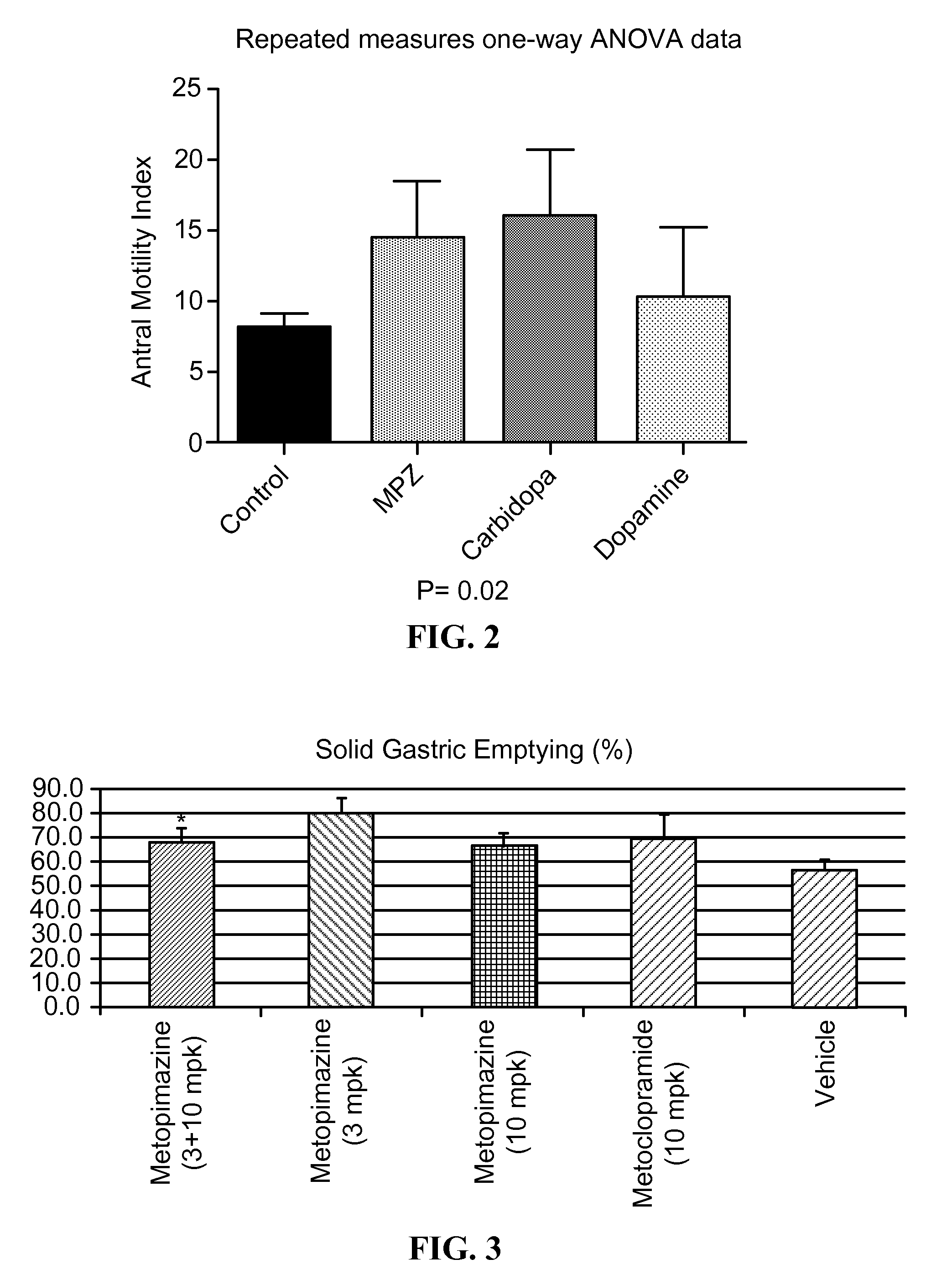Methods for treating GI tract disorders
a gi tract disorder and gi tract technology, applied in the direction of antibacterial agents, drug compositions, antiparasitic agents, etc., can solve the problems of discontinuation of treatment, poor quality of life, discontinuation of chemotherapy, etc., and achieve the effect of improving gastric emptying
- Summary
- Abstract
- Description
- Claims
- Application Information
AI Technical Summary
Benefits of technology
Problems solved by technology
Method used
Image
Examples
example 1
Metopimazine and Metopimazine Acid are Selective and Potent Dopamine D2 Receptor Antagonists
[0257]The pharmacological profile of metopimazine, metopimazine acid (MPZA), domperidone, and metoclopramide were assessed by radioligand binding and by a functional antagonist assay. For the radioligand binding assay, cell membranes of dopamine D2 receptor expressing cells were incubated with [3H]spiperone and competing drugs in buffer. The assay was terminated by rapid filtration, and the bound radioactive signal was determined by liquid scintillation counting. Results from the ligand binding assay are depicted in Table 1, below.
[0258]
TABLE 1Pharmacological Profile. Radioligand Binding Affinity (Ki, nM)D2D3α15HT25HT35HT4H1Metopimazine (NG101)0.070.611.9015.0InactiveInactive8.40Metopimazine-Acid (NG102)14.0>100 nM210370InactiveInactive140Domperidone1.307.50Metoclopramide64.016.0
[0259]The functional antagonist assay was performed as described in Payne, S. L et al. (2002) J. Neurochem., 82: 1...
example 2
Metopimazine and Metopimazine Acid do not Interact with hERG Channels
[0262]The ability of the compounds metopimazine, metopimazine acid, and domperidone to inhibit hERG channels was assessed. Briefly, hERG—expressing cultured cells incubated in various concentrations of the drugs were subjected to a voltage clamp assay. Cells were held at a −70 mV resting membrane potential. hERG currents were elicited with a single-pulse command voltage protocol using a depolarization to +40 mV. Elicited hERG currents were measured. Table 3, below, depicts experimental results from the study.
[0263]
TABLE 3hERG Activity (% Inhibition of Tail Current)100 nM1 μM10 μMMetopimazine4.53282(NG101)Metopimazine-0.2411Acid (NG102)Domperidone5592100
Results demonstrated that that the concentration necessary to inhibit 50% of the tail currents mediated by hERG channels was approximately 3 μM, >10 μM and 0.1 μM for metopimazine, metopimazine-acid and domperidone respectively. Metopimazine and metopimazine-acid wer...
example 3
Metopimazine and Carbidopa Promote Gastric Motility in Canines
[0264]The effects of metopimazine and carbidopa on gastric motility in vivo were assessed using antral manometry in canines Two healthy female hound dogs (24-28 kg) were involved in this study. Animals were fed an ad libitum chow diet (LabDiet®). After an overnight fast, the dogs were anesthetized with Pentothal (sodium thiopental, 11 mg / kg IV; Abbott Laboratories, North Chicago, Ill.) and maintained on 2-4% isoflurane (Abbott Laboratories) in oxygen (1 L / min) carrier gases delivered from a ventilator after endotracheal intubation. A cannula was placed in the jejunum 20 cm distal to the pylorus for the assessment of antral motility. Dogs were allowed to recover in their individual cages for 2 weeks. All experiments were performed after the dogs were completed recovered from the surgical procedure. The study was performed according to the National Institutes of Health Guidelines on the use of laboratory animals and approve...
PUM
| Property | Measurement | Unit |
|---|---|---|
| weight percent | aaaaa | aaaaa |
| particle sizes | aaaaa | aaaaa |
| particle sizes | aaaaa | aaaaa |
Abstract
Description
Claims
Application Information
 Login to View More
Login to View More - R&D
- Intellectual Property
- Life Sciences
- Materials
- Tech Scout
- Unparalleled Data Quality
- Higher Quality Content
- 60% Fewer Hallucinations
Browse by: Latest US Patents, China's latest patents, Technical Efficacy Thesaurus, Application Domain, Technology Topic, Popular Technical Reports.
© 2025 PatSnap. All rights reserved.Legal|Privacy policy|Modern Slavery Act Transparency Statement|Sitemap|About US| Contact US: help@patsnap.com



